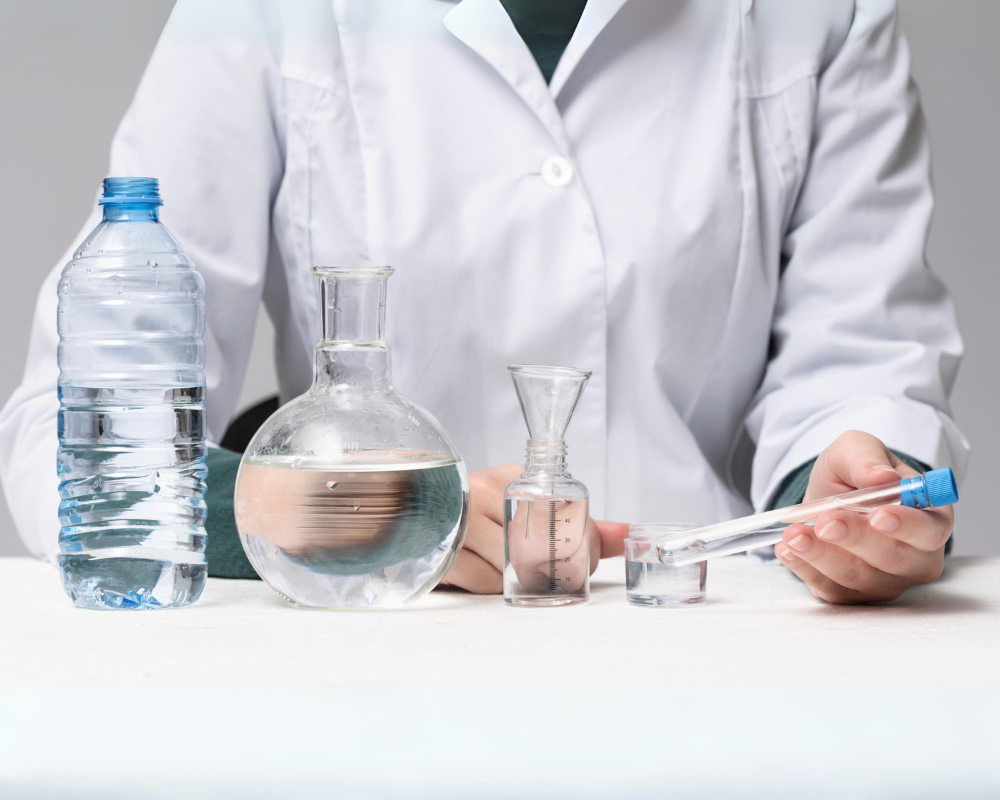
EPA-regulated PFAS analysis in drinking water relies on standardized methods designed to capture a wide range of legacy and emerging PFAS compounds. Each method outlines specific requirements for sample handling, extraction, and LC-MS/MS detection to ensure accurate reporting at extremely low concentration levels (often in the ppt range). Two of the most widely used methods for compliance monitoring and routine analysis are EPA Method 537.1 and EPA Method 533. While both rely on solid-phase extraction (SPE) and liquid chromatography/tandem mass spectrometry, they differ in target analyte lists, isotopic standards, and the types of PFAS chemistries they are optimized to detect.
PFAS EPA Methods for Drinking Water
EPA Method 537.1
EPA Method 537.1 is primarily focused on legacy, long-chain PFAS compounds. It is used for the determination of 18 selected PFAS in drinking water by SPE followed by LC-MS/MS. This method is widely used for regulatory monitoring programs and provides highly specific guidance on sample preservation, quality control criteria, and instrument parameters.
Key points include:
- Targets primarily long-chain carboxylic acids and sulfonic acids (e.g., PFOA, PFOS).
- Requires the use of isotopically labeled analogs for quantification.
- SPE cartridges are eluted using methanol, followed by concentration and reconstitution before LC-MS/MS analysis.
- Emphasizes contamination control, as PFAS are ubiquitous in lab materials.
EPA Method 533
EPA Method 533 expands analytical coverage to include many short-chain PFAS that pass through traditional C18 SPE materials more easily. It focuses on 25 PFAS, particularly emerging and replacement chemistries.
Notable features include:
- Designed to capture short-chain PFAS via weak anion exchange (WAX) SPE.
- Complements Method 537.1—together, the two methods provide broad PFAS coverage across both long- and short-chain compounds.
- Includes strict criteria for method performance, including recovery limits, matrix spikes, and calibration verification.
- Particularly relevant for utilities monitoring for replacement PFAS that have become more common due to regulatory phaseouts of legacy long-chain compounds.
Overall, the combination of Methods 537.1 and 533 allows laboratories and drinking water facilities to achieve comprehensive PFAS screening coverage. Selecting which method (or combination of methods) to run depends on regulatory requirements, the PFAS chemistries of concern, and the detection limits needed for compliance or investigative monitoring.
General Sample Preparation Steps
1. Sample Collection
- Use appropriate containers: Typically, HDPE or polypropylene bottles pre-rinsed with methanol and PFAS-free water are used.
- Avoid contamination: Use gloves and avoid contact with any materials that could contain PFAS (e.g., certain types of tubing, waterproof clothing).
- Preservation: Samples should be collected with a preservative such as Trizma® or ammonium acetate to maintain sample integrity.
- Storage: Keep samples at or below 6°C (but not frozen) until analysis.
2. Sample Filtration
If turbidity is a concern, filter the samples using a PFAS-free filter to remove particulate matter that could interfere with the analysis.
3. Solid-Phase Extraction (SPE)
- Cartridge conditioning: Condition SPE cartridges with methanol followed by water.
- Sample loading: Load the water sample onto the SPE cartridge at a controlled flow rate.
- Washing: Wash the cartridge with water to remove interferences.
- Elution: Elute the PFAS compounds from the cartridge using a suitable solvent such as methanol.
4. Concentration
- Evaporation with Organomation N-EVAP or MULTIVAP:
Utilize Organomation’s N-EVAP (flexible nitrogen evaporator) or MULTIVAP (batch sample evaporator) system to concentrate the eluted PFAS extract. These systems are designed for efficient and controlled evaporation under a gentle stream of nitrogen, minimizing the risk of sample loss and contamination.
- Placement of samples: Securely place the sample vials in the N-EVAP or MULTIVAP system.
- Nitrogen supply: Connect the system to a nitrogen gas supply. Adjust the nitrogen flow rate according to the manufacturer’s recommendations and the specific needs of your sample volume. Recommended flow rate for most Organomation evaporators is 0.33 L/min per sample.
- Temperature control: Set the temperature of the water bath or dry block (depending on the system) to the desired level, typically around 40°C to 60°C. This promotes efficient evaporation while preventing thermal degradation of PFAS compounds.
- Evaporation process: Begin the evaporation process by introducing a gentle stream of nitrogen over the surface of the sample. Monitor the process closely to avoid complete drying. The goal is to concentrate the sample to a small, manageable volume, usually around 1 mL or less.
- End point: Once the desired concentration is achieved, promptly remove the sample vials from the system. Over-evaporation can lead to sample loss and potential degradation of PFAS compounds.
- Reconstitution:
- Solvent Addition: Reconstitute the concentrated sample by adding an appropriate volume of a suitable solvent, such as methanol or a water/methanol mixture. This step ensures that the sample is in a compatible form for subsequent instrumental analysis.
- Mixing: Gently vortex or shake the vial to ensure complete dissolution of the concentrated analytes.
- Transfer: Transfer the reconstituted sample to an autosampler vial suitable for liquid chromatography/tandem mass spectrometry (LC-MS/MS) analysis. Ensure the vial is properly labeled for easy identification.
- Internal Standards:
Add isotopically labeled internal standards to the sample. This step is critical for accurate quantification, as it accounts for any potential losses during sample preparation and provides a reference for the analytes of interest.
By incorporating the use of Organomation’s N-EVAP or MULTIVAP systems, laboratories can achieve efficient and reliable evaporation of PFAS samples under nitrogen. These systems are designed to handle multiple samples simultaneously, increasing throughput and ensuring consistent results. Their precise control over evaporation conditions minimizes the risk of sample loss and degradation, making them an excellent choice for PFAS analysis in drinking water.
Using these systems aligns with best practices in sample preparation, ensuring that the concentrated samples are ready for accurate and reliable quantification using advanced analytical techniques such as LC-MS/MS.
Up Next: See why Organomation sample concentrators are trusted by Waters to dry down their PFAS samples
